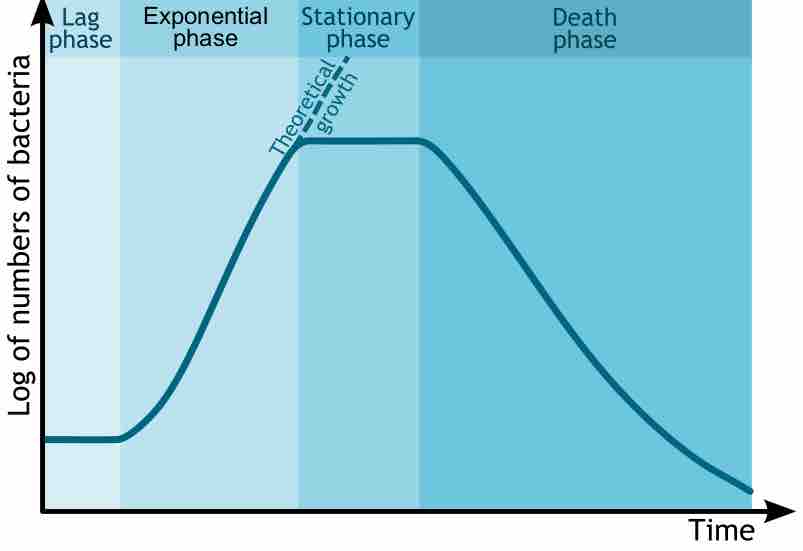Bacterial growth is the division of one bacterium into two daughter cells in a process called binary fission. Providing no mutational event occurs the resulting daughter cells are genetically identical to the original cell. Therefore, "local doubling" of the bacterial population occurs. Both daughter cells from the division do not necessarily survive. The doubling time is the generation time of the bacteria. If the number surviving exceeds unity on average, the bacterial population undergoes exponential growth.
The measurement of an exponential bacterial growth curve in batch culture was traditionally a part of the training of all microbiologists. The basic means requires bacterial enumeration (cell counting) by direct and individual (microscopic, flow cytometry), direct and bulk (biomass), indirect and individual (colony counting), or indirect and bulk (most probable number, turbidity, nutrient uptake) methods. In autecological studies, bacterial growth in batch culture can be modeled with four different phases: lag phase, exponential or log phase, stationary phase, and death phase .

Bacterial Growth Curve
This chart shows the logarithmic growth of bacteria. Note the Y-axis scale is logarithmic meaning that the number represents doubling. The phases of growth are labelled on top.
During lag phase, bacteria adapt themselves to growth conditions. It is the period where the individual bacteria are maturing and not yet able to divide. During this phase of the bacterial growth cycle, synthesis of RNA, enzymes, and other molecules occurs. The exponential phase (sometimes called the log phase or the logarithmic phase) is a period characterized by cell doubling. The number of new bacteria appearing per unit time is proportional to the present population. If growth is not limited, doubling will continue at a constant rate so both the number of cells and the rate of population increase doubles with each consecutive time period. For this type of exponential growth, plotting the natural logarithm of cell number against time produces a straight line. The slope of this line is the specific growth rate of the organism, which is a measure of the number of divisions per cell per unit time.
The actual rate of this growth (i.e. the slope of the line in the figure) depends upon the growth conditions, which affect the frequency of cell division events and the probability of both daughter cells surviving. However, exponential growth cannot continue indefinitely because the medium is soon depleted of nutrients and enriched with wastes. Finally, the stationary phase is due to a growth-limiting factor, such as depletion of a nutrient and/or the formation of inhibitory products such as organic acids. Death of cells as a function of time is rather unpredictable and very difficult to explain. At death phase, bacteria run out of nutrients and die. This basic batch culture growth model draws out and emphasizes aspects of bacterial growth which may differ from the growth of macrofauna. It emphasizes clonality, asexual binary division, the short development time relative to replication itself, the seemingly low death rate, the need to move from a dormant state to a reproductive state or to condition the media, and finally, the tendency of lab adapted strains to exhaust their nutrients. In reality, even in batch culture, the four phases are not well defined.